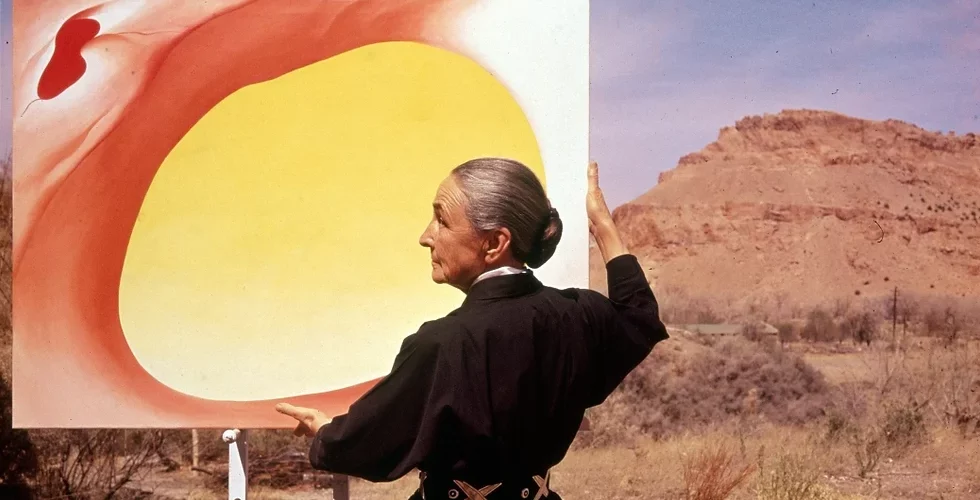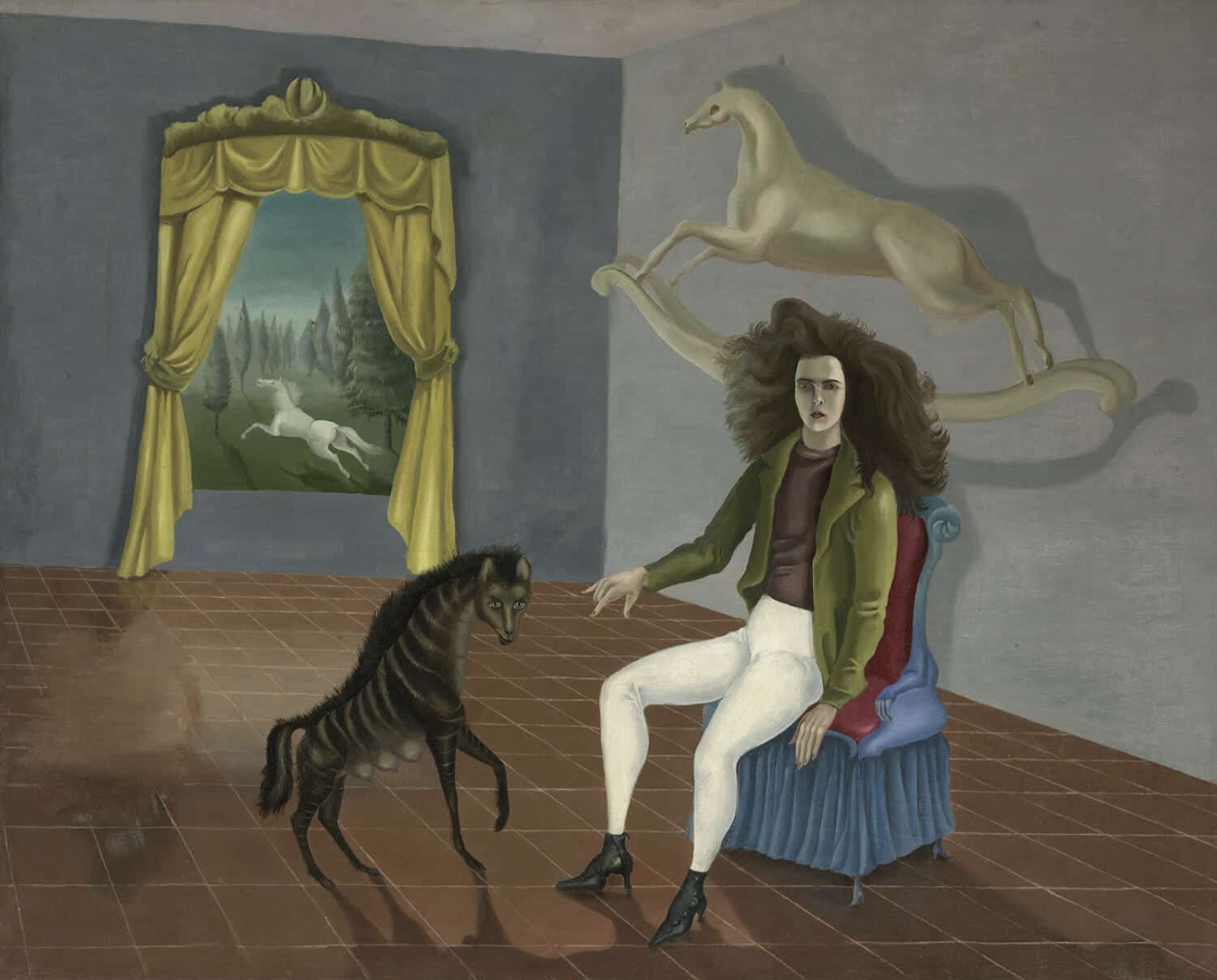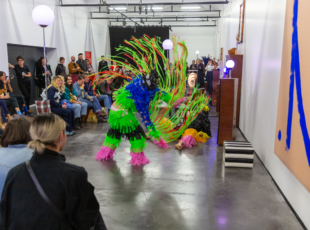Weekly – Friday 24.11.23

Article author :
Friday is weekly: a digest of what the team has seen, read and listened to, and wants to share with you.
Van Gogh, Monet, Turner, Picasso, Dali, Toulouse-Lautrec, Matisse, Hockney, Rivera, Gauguin… The names of male artists, which we can all list by the dozen. Well-known and recognised on every continent, their works are peppered throughout history of art books. The majority are considered key figures, the ‘founding fathers’ of impressionism, surrealism or pop art.
On the other hand, when it comes down to naming female painters, the task becomes more taxing. Let’s give the exercise a try-out. Frida Kahlo, Niki de Saint-Phalle… And then it gets a little tricky, doesn’t it? Go on then, we’ll help you out a little. Have you heard of Leonora Carrington, the British-Mexican painter, novelist, sculptor and activist ? Or of Berthe Morisot, avant-gardist and co-founder of the impressionist movement? Or Janet Sobel, the American-Ukrainian pioneer of abstract expressionism? Or Remedios Varo, a Mexican surrealist painter of Spanish origin? Or what about Amrita Sher-Gil, a major Indian figure of modern art?




These artists don’t ring a bell? That’s to be expected, and it must be said they gain a lot less media coverage than their male counterparts. Several have even been deliberately disavowed and erased from our memory. In the face of such injustice, the Brit Katy Hessel for her part has wished to totally rewrite the history of art without the males. And that is what she has done in her work The Story of Art Without Men, written during the lockdown. This literary triumph, crowned best seller of the year for 2022, celebrates female artists from 1500 to the present day.
It was Katy Hessel who in 2015 launched the Instagram account @thegreatwomenartists. Each day, she publishes a post on a female or gender minority artist. Painters, photographers, visual artists, sculptors, etc. Katy covers their life journeys and shares what she feels when looking at their works. Curator, author, a BBC documentary presenter, Katy has a passion for art, nourished by exhibitions and museums from a very early age. At her parents’ home, a prominent place was given to the brick of 688 pages written by E.H Gombrich The Story of Art, in which just a single woman featured. And therefore with this account she wanted to first of all educate herself, and also pay tribute to all these women creators who have for a (too) long time remained in the shadow of history. The idea was in particular inspired by the Guerilla Girls.
On the strength of her success, Katy then created a podcast in order to meet or (re)bring to life her heroines. In it she interviews artists, curators, writers and art lovers like herself. Ten seasons and over 100 episodes to relearn the classics, get off the beaten track, and, icing on the cake, polish up her English.

Bloggeronpole
Another nugget unearthed this week: the talented Carolina Are. This Sardinian by birth and Londoner at heart wears numerous hats: blogger, author, writer, pole dancer, freelance journalist, speaker, pole dancing instructor, etc. On her website bloggeronpole, she shares a myriad of articles recounting her passions: pole dancing, fitness, lifestyle, wellbeing, tech research, activism, etc.
A journalism and cybercrime graduate, Carolina has carried out numerous projects and regularly gives talks within the university milieu. Her studies primarily focus on online abuse and the Shadow Ban phenomenon, a censorship technique used by social networks regarding certain content judged inappropriate.
In the opinion of the researcher, this moderation tool has reproduced social inequalities in favouring the discourse of dominant groups whilst invisibilizing the speech of the oppressed. On her Instagram account, Carolina summarises her research amongst photos of herself pole dancing. A discipline she discovered on a trip to Sydney and which has transformed her. Thanks to this sport, she has been able to reappropriate her body and its image.
A woman with a thousand facets, Dr Are tears off the labels which are stuck to her skin, including that of an unbridled sexuality, and proves that it is possible to ‘show your ass and be a cybercrime pro.’
Is the masculine neutral?
With a debate in full swing on inclusive writing, the latter being the subject of a proposed law in France aiming to ban certain grammatical elements such as ‘iels’ or ‘celleux’, we suggest listening to this podcast: Masculin neutre : écriture exclusive. Emerging from the incredible series Les couilles sur la table produced by Binge Audio and piloted by the journalist and writer Victoire Tuaillon, these two unseen episodes look into the issue from a psycholinguistic and then historical perspective.
In them we come to understand the extent to which language shapes our ways of thinking and conceive of the world. And that the rule ‘the masculine prevails over the feminine’ (in terms of classical French grammar) is the outcome of a political strategy which has not always been de rigueur. Let us remind ourselves that in the Walloon-Brussels Federation, a decree concerning inclusive writing was adopted on 14 October, 2021, and that a practical guide has been written to that effect. Because kingkong is intended for everybody, without any distinction of gender, inclusive writing is an integral part of if its DNA.
A story, projects or an idea to share?
Suggest your content on kingkong.





